Corporate style of clothing

Almost every large company strives to develop its own recognizable style. This applies not only to the logo or motto, but also to branded clothing for employees. Corporate style is the name of one of the modern fashion trends, which will be discussed in our article.
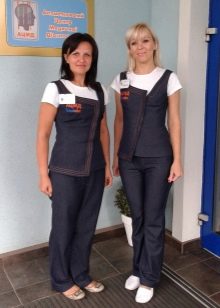

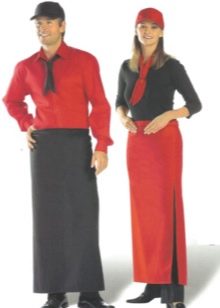
Peculiarities
This style is developed for each company with the aim of uniting its employees, forming positive associations among customers and generating positive emotions.

A well-thought-out corporate identity, including in clothing, improves the microclimate inside the enterprise, improves the efficiency of employees, fosters a sense of teamwork and responsibility.
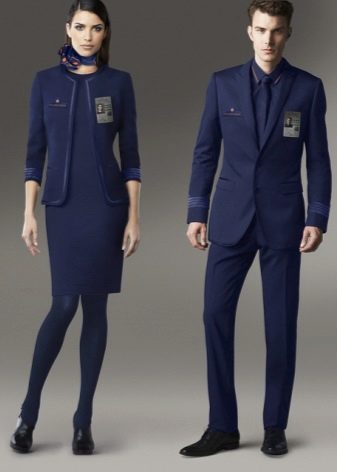
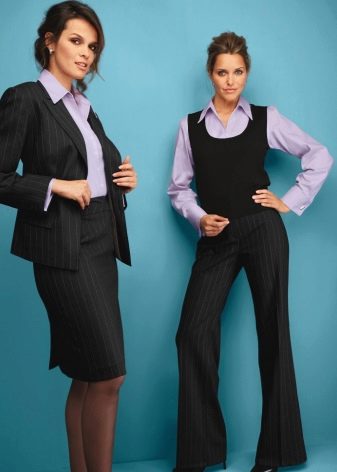
Today the corporate style is the hallmark of the company, which contributes to its recognition and popularity.
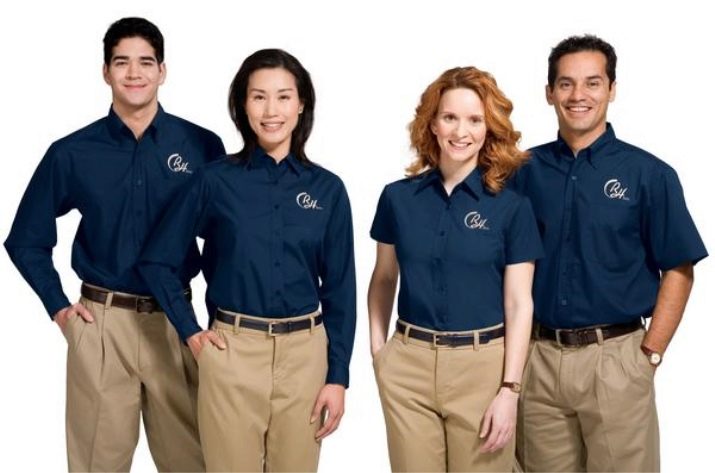
The corporate style is different from the business one. The official uniform provides for a strict cut, well-defined garments and regulates the length, color and the presence of decorative elements.
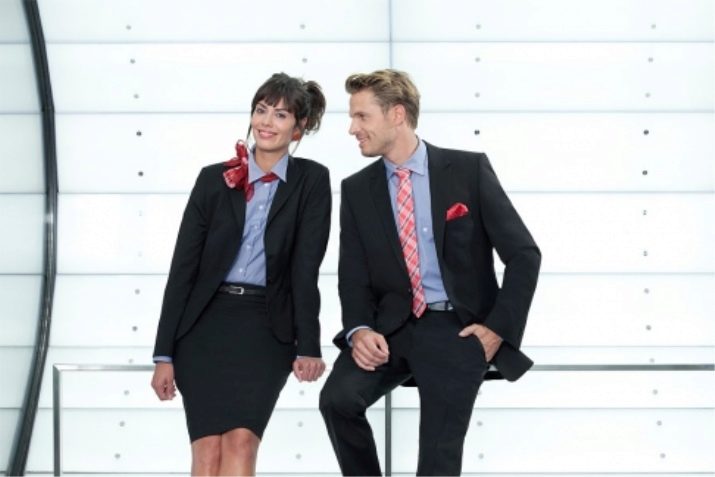
Corporate style is not necessarily expressed in a strict dress, straight skirt and blouse or trouser suit. This can be a set of jeans, a T-shirt and sneakers, or the presence of a certain detail in clothes, for example, a vest, a scarf, or trousers of a certain color. There can be many variations on this theme, each company develops its own style individually.
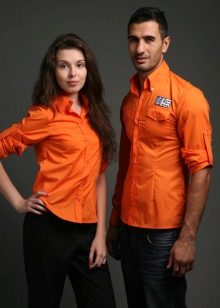
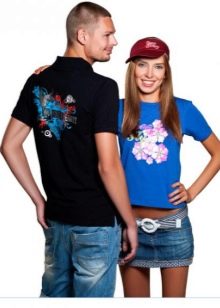

In other words, this is the dress code adopted at this enterprise. All employees of the company are obliged to adhere to it.
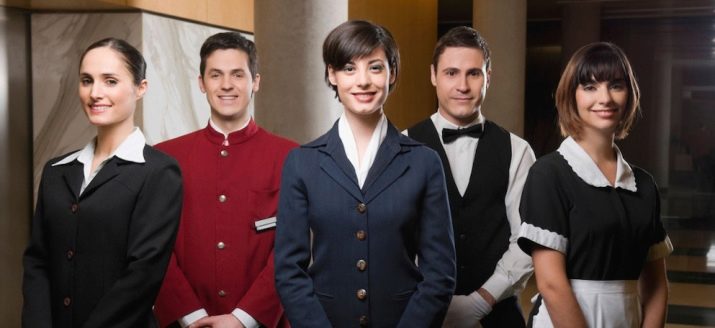
Models
Clothes can differ from each other in different ways: color, length, style, garments, material from which it is sewn, the presence of decorative elements and other details.
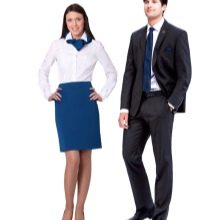
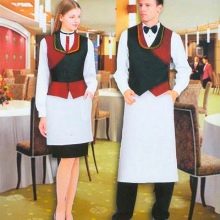
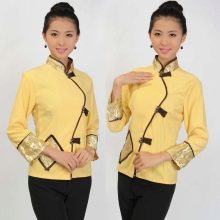
Basically, such clothes can be conditionally divided into several large groups:
- Strict business style. Most popular group.This includes a strict classic blouse or shirt, a straight midi skirt, a sheath dress, a two-piece or three-piece trouser suit. Shoes - classic men's shoes or women's pumps with small heels. Typically, these requirements are present in the banking sector or in law firms.

- A less formal style is complemented by a knitted sundress with a turtleneck or blouse, heels, boots or ankle boots. For men, the wardrobe is complemented by turtlenecks, jumpers. A jacket and vest are optional.

- Democratic style. The freest and least strict of all of the above. Skirts and dresses allow a length slightly above the knee, romantic-style blouses, tops, jeans, sweaters appear. The main thing is that the clothes are chosen harmoniously. Transparent, too open, bright, catchy things are not allowed. This applies to low-cut dresses, transparent blouses, and luminous shoes.
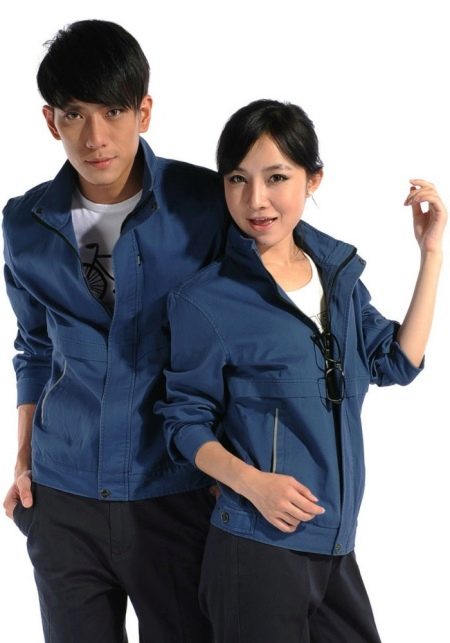
In addition, there are a few things that hardly occur in any group. These are shorts, breeches, miniskirts, shirts, skirts and sundresses made in flashy style, beachwear and shoes.


By the way, certain requirements are also imposed on shoes. It should be closed, have a classic design, restrained colors. Models with an open heel or toe, perforation, too high heels or platform are not allowed. The decor should be modest - no rhinestones, sparkles, bright appliqués, transparent heels.

Accessories should also be laconic: a tie, a tie pin, a neckerchief, a neat brooch, a thin chain, small earrings.
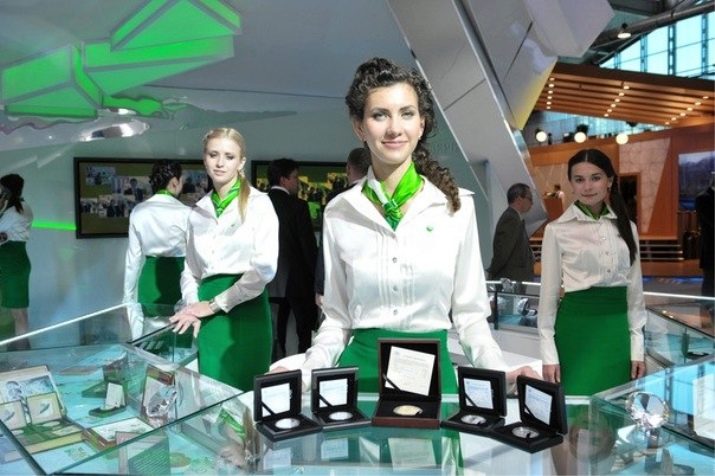
Each company has its own corporate style. It can change over time: supplemented with new elements, emblems, change color, design.
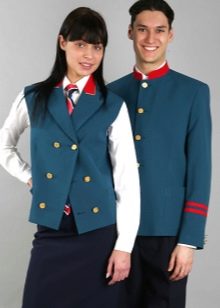
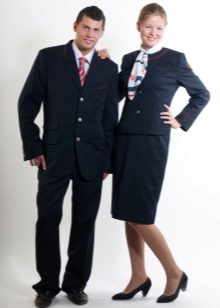
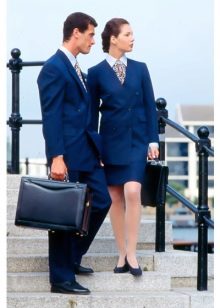
Color solutions
The color scheme used to create a particular set of clothing in this style is of tremendous importance. Poisonous, bright colors not only will not attract the attention of potential customers, but will also cause irritation, rejection and rejection on a subconscious level.
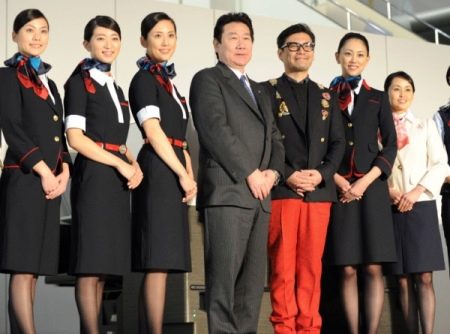
This moment is well known not only to psychologists, but also to designers. Therefore, the color scheme used to create such clothes most often includes calm, restrained tones: blue, dark green, burgundy, mustard, marsh.
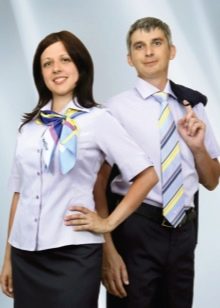


The classics are always relevant, especially when it comes to strict clothing. It is black, white and gray.
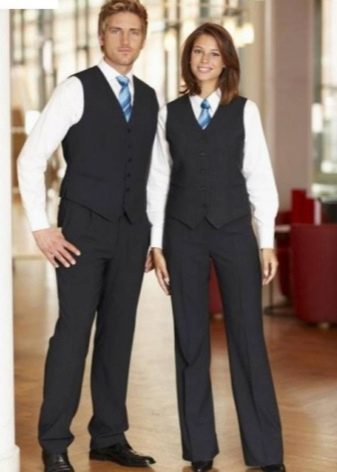
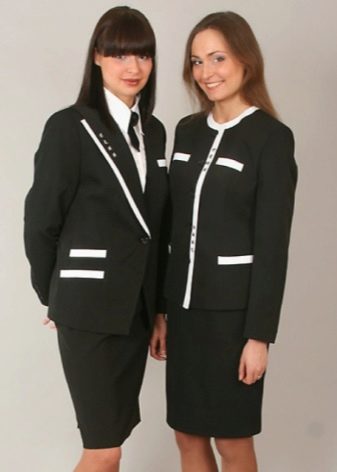
However, there are some exceptions here. Bright, catchy accessories or details, for example, a scarf, belt, vest, tie in green, blue, orange, red, yellow, help to dilute an overly strict and formal look.
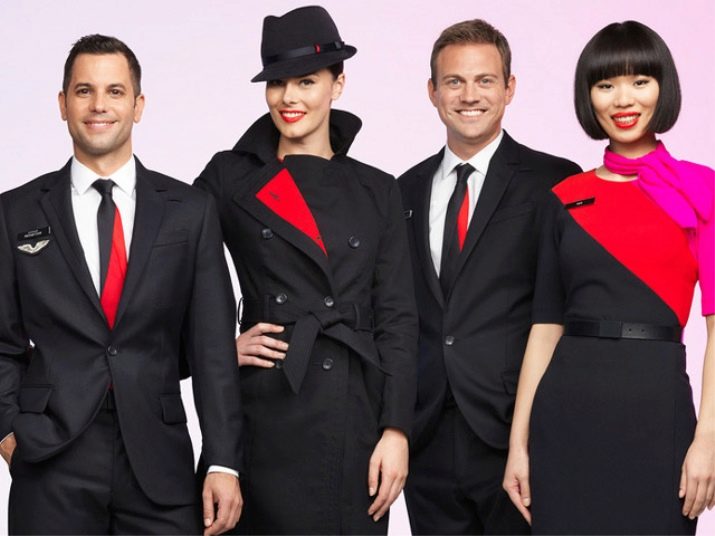
Prints are not usually used to decorate such garments, exceptions may be made for the company logo.









